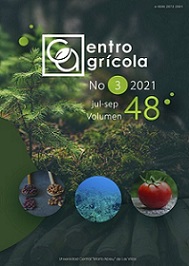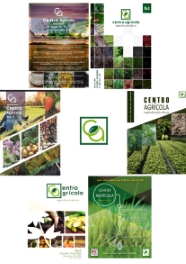CE: 1677 CF: cag07118
SCIENTIFIC ARTICLE
Effect of combined application of chemical fertilizer and worm humus on Capsicum annuum
Efecto de la aplicación combinada de fertilizante químico y humus de lombriz en Capsicum annuum
Enildo Abreu Cruz1, Evencio Araujo Camacho2, Sergio Luis Rodríguez Jimenez1, Aymara Luisa Valdivia Ávila1, Leticia Fuentes Alfonso1 y Yunel Pérez Hernández1
1 Facultad de Ciencias Agropecuarias, Universidad de Matanzas, Cuba. Dirección: Autopista a Varadero, Km 3 ½, CP 44740. This email address is being protected from spambots. You need JavaScript enabled to view it., This email address is being protected from spambots. You need JavaScript enabled to view it., This email address is being protected from spambots. You need JavaScript enabled to view it., This email address is being protected from spambots. You need JavaScript enabled to view it., This email address is being protected from spambots. You need JavaScript enabled to view it.
2 Fundación Escuela Popular Alí Primera. San Carlos, Cojedes, Venezuela, CP 2201. This email address is being protected from spambots. You need JavaScript enabled to view it.
ABSTRACT
The aim of the present work was to evaluate the effect of different doses of chemical fertilizer and worm humus, on growth and development of Capsicum annuum L. cv. Magistral. As chemical fertilizer was used the 10-20-10 formulation and as organic fertilizer the earthworm humus was used. Five treatments were applied: chemical fertilization 100 %, 2, 4 and 6 t ha-1 of humus + chemical fertilization (75 %) and 4 t ha-1 of humus only. Different indicators of growth, reproductive and crop yields were evaluated. The data were analyzed by variance of simple classification and Tukey Test was used for comparison among media of treatments. The best results were obtained with the application of chemical fertilizer 100 % in the first harvest in relation to height, number of leaves, flowers, fruits per plants and fruit weigh. The effect of humus application combined with chemical fertilizer improved the reproductive parameter in the second harvest. The yield obtained was higher with the application of chemical fertilizer in the first harvest; however in the second harvest the results achieved were similar to that the yield after the application of chemical fertilizer 75 % + humus 4 and 6 t ha-1, which showed the positive effect of humus on the parameter evaluated. The results obtained showed the potentiality of the worm humus to reduce the application of chemical fertilizer without affecting yield of C. annuum.





